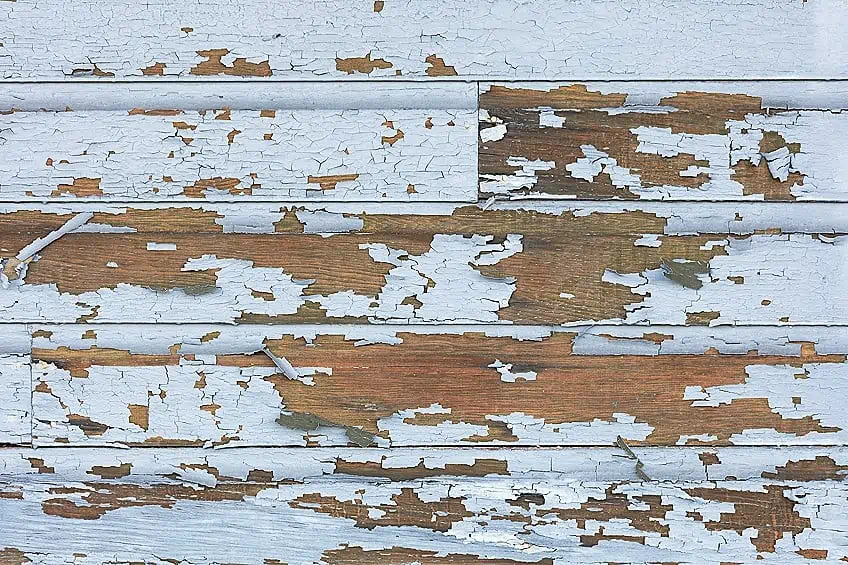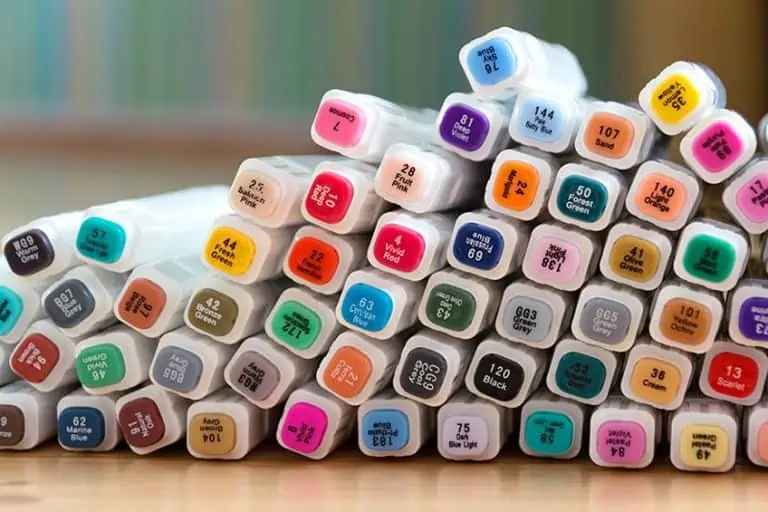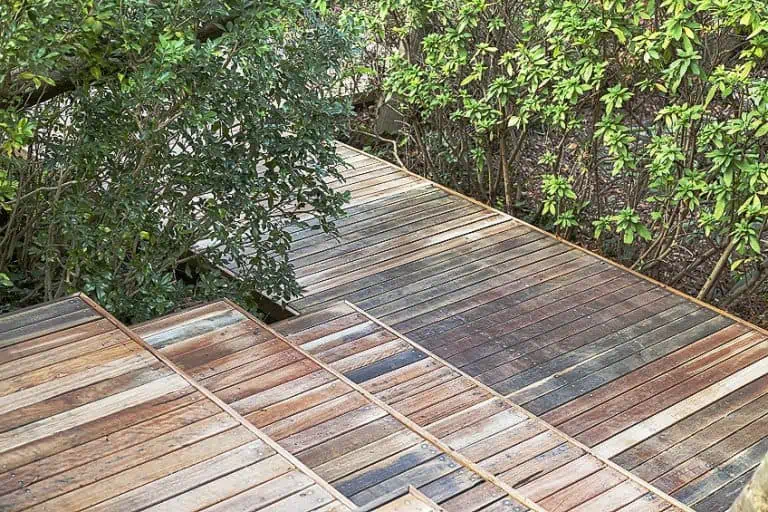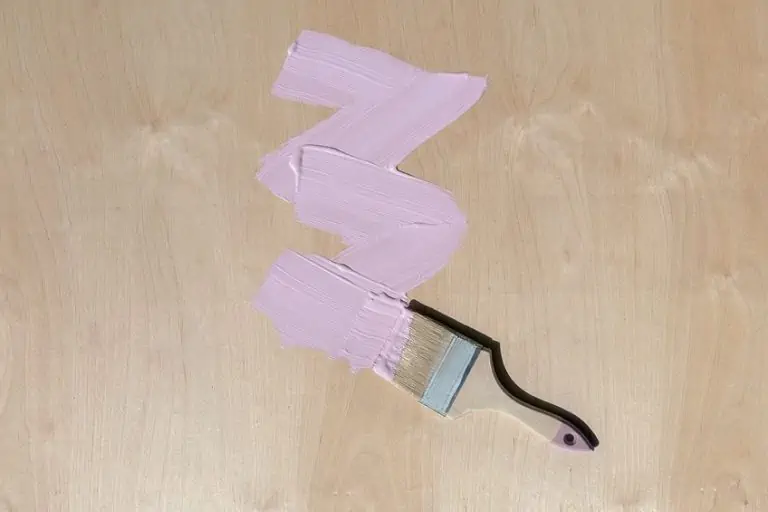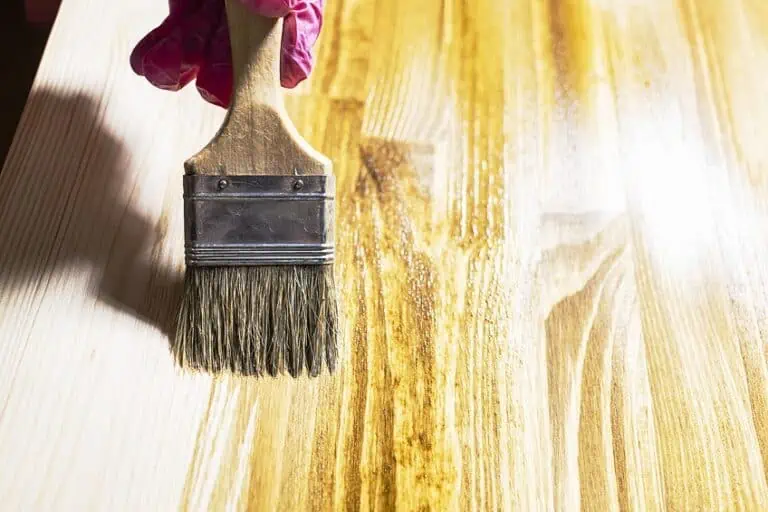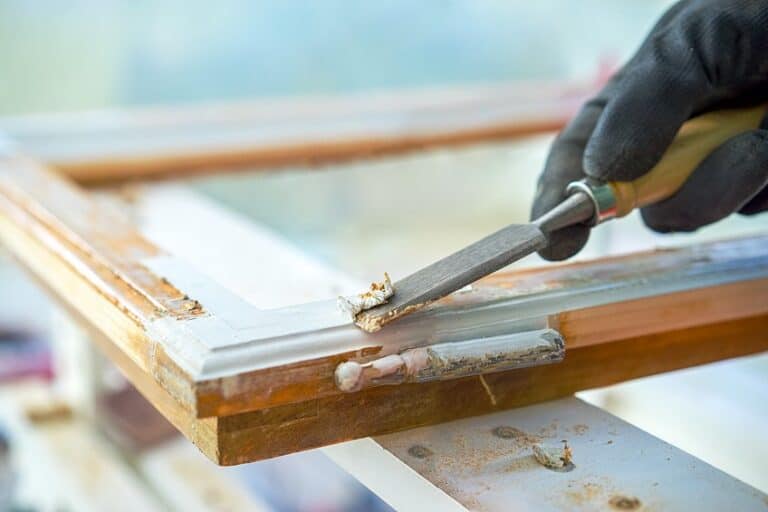How to Remove Paint from Wood Floor – Removing Old Paint From Wood
Removing paint from wooden floors sounds more difficult than it is. All you need is the right technique and a good product to make the process as easy and pain-free as possible. We have outlined the best ways to remove old paint from your wooden and hardwood floors, and have recommended the best products for doing so.
Removing Paint From Wooden Floors
Before you can begin the process of removing old paint from your wooden floors, you first need to ensure that the area in question is completely clean of any dust, dirt, or residues. You will then need to determine whether your paint stain has a water or an oil base.
To determine whether you have a water- or oil-based paint stain, simply wipe the paint stain with a cotton ball dipped in alcohol. If the stain comes off, it is water-based, and if not, it is an oil-based stain. Once you have determined the type of stain you will be removing, you can begin working on removing the old paint.
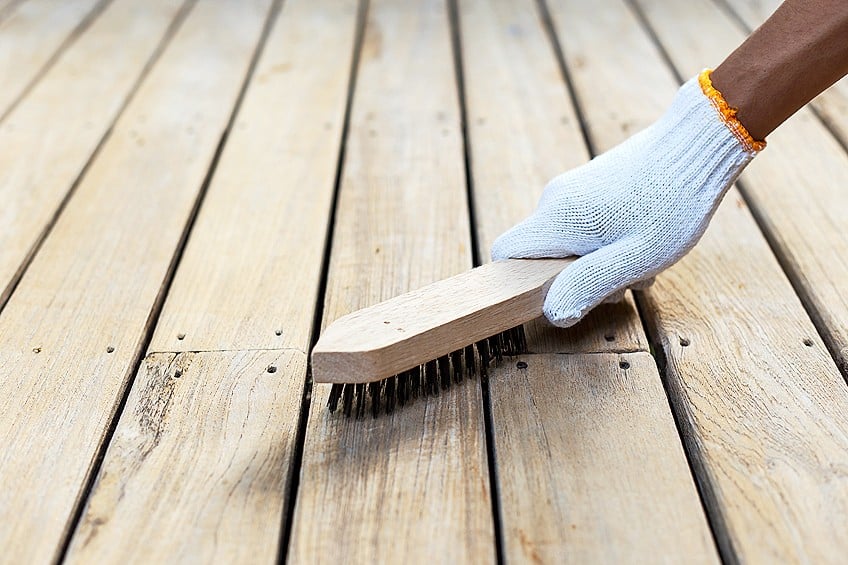
Removing a Water-Based Paint Stain
There are a few simple methods that you can use to remove water-based paint from wood. You could either remove the stain with soap and water, or you could use rubbing alcohol.
You will just need a damp cloth to begin removing the stain with soap and water. You can get rid of more stubborn stains with a putty knife, although you need to be careful not to damage the wood by scrubbing too hard. You can finish up by wiping the soap off with a clean cloth and ensuring that the surface is properly dried before doing anything else to the wood.
Alternatively, you can remove the water-based stain by using rubbing alcohol, which is also known as isopropyl alcohol. Mix three parts rubbing alcohol to one part lemon juice (3:1 ratio) and cover the paint stain. Allow the solution to sit on the stain for five minutes, after which time you can use a clean cloth to rub off the old stain.
You can also use an old toothbrush or nylon brush to scrub stubborn paint stains off of the wooden flooring. Be sure to wipe the area dry with a clean cloth once you have finishing scrubbing the stain.
Removing an Oil-Based Paint Stain
Removing an oil-based stain is a bit more involved and will require a bit more effort. If the paint has dried, use a plastic putty knife to gently scrape the paint off without scratching or damaging the surface. If the paint is hard to get off, you can use a hammer to knock the plastic putty knife gently so as to remove the paint stain.
If the paint has seeped into cracks and in-between boards, you can use a tool known as a pull scraper to remove these stains more easily. If the stains continue to remain, you can use a heat gun or a hairdryer set at the maximum heat and hold the device 3 inches away from the paint stain. Keep the device in position for approximately 20 to 30 seconds, being careful not to hold the heat gun or hairdryer for too long or too close, as it can cause a fire and damage the wood. You then can scrape off the loosened paint stain.
Denatured alcohol such as methylated spirits or ethanol can also be used to remove stubborn stains. Pour some denatured alcohol onto a cloth and gently rub it onto the surface of the paint stain, leaving it to sit for a few minutes. You can then scrub the stain with a brush and wipe off the surface with a clean cloth, ensuring the surface is dry.
Best Wood Paint Stain Removers
We have chosen three of the best wood stain stripper products available on the market, each of which has its own advantages and disadvantages.
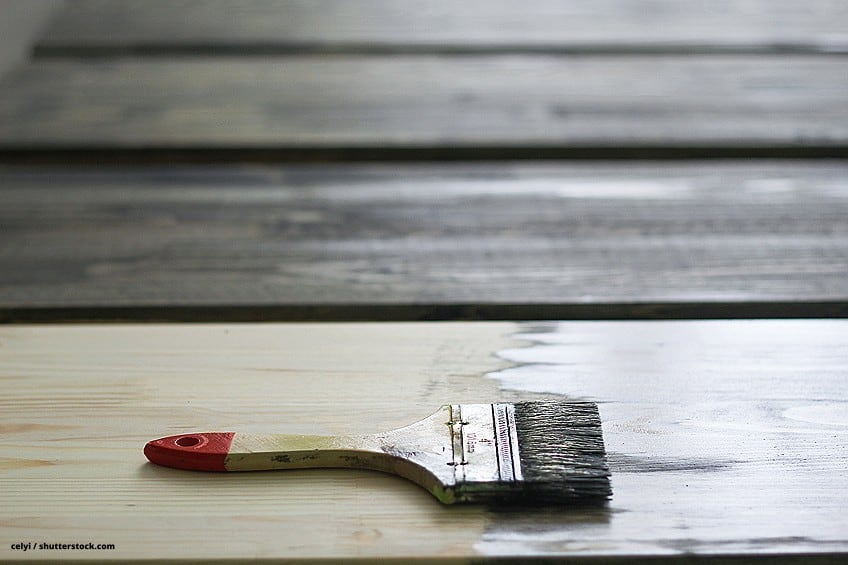
Best Value: RESTORE-A-DECK Wood Stain Stripper
This wood stain stripper acts also acts as a brightener for your wooden surfaces. Both the stripping and brightening solutions are biodegradable powdered concentrates that will work to restore your wooden surface.
The stain stripper will remove your old finishes quickly and easily, whilst also removing any dirt, mold, and mildew. After this, you would apply the brightener, which will remove rust and tannin stains whilst brightening and neutralizing the surface of the wood.
You can use this product to remove most oil-, water-, and latex-based stains. This product offers a mix of versatility, strength, affordability. With some trial and error, it should be able to do the job well.
Pros
- Provides good coverage
- Eco-friendly
- Can be mixed at more concentrated ratios for tougher stains
- Is suitable and effective for most projects
- Will not interfere with staining when wet
Cons
- Can be harmful
- Does not remove solid color stains, paints, polyurethanes, or thick acrylics
Premium Choice – WOODRICH Extreme Solutions Wood Cleaner & Wood Stripper
This is a product for the toughest of stains, which will work on both new and weathered wooden surfaces. Woodrich products are formulated with a special buffer that will protect the wood’s natural oils and ingredients, thus maintaining the fresh, rich aesethetic that is characteristic of wood.
This is an eco-friendly product that is safe to use around everyone, including pets and plants. You will be able to remove even the toughest and most weathered oil-based stains with this easy-to-use formula. This product is able to strip most kinds of semi-transparent stains and sealers, and will also remove dead wood, mold and mildew, and other forms of dirt and grime.
Pros
- Prevents and removes mold, mildew, old paint, rotting wood, and more
- Contains no dangerous chemicals
- Mixing allows for custom results
- Environmentally friendly
- Works well on greyed wood
Cons
- Expensive
- Cannot remove solid stains
Budget-Friendly – FLORIDA LABORATORIES Oxalic Acid Wood Stain Remover
This product provides you with a raw material known as oxalic acid, which has a 99.6% purity. You can use this product simply by dissolving it in some hot water, and then scrubbing the hot solution over the surface with a brush.
This is a highly concentrated product that can cause harm if you do not take the proper precautions. Work in a well-ventilated space and wear protective gloves and a mask. This product does not include any instructions or measurements, so it is recommended to individuals that know what they are doing.
Pros
- Cheap stain remover
- Lab-grade purity
- Mixing allows an opportunity for customization
- Removes any kind of stain
Cons
- Somewhat dangerous to use
- Hazardous to pets and children
Other Ways of Removing Paint from Wooden Floors
There are a variety of other ways to remove old paint from your wooden floors, such as scrubbing at the paint with cleansing pads or by using paint thinner.
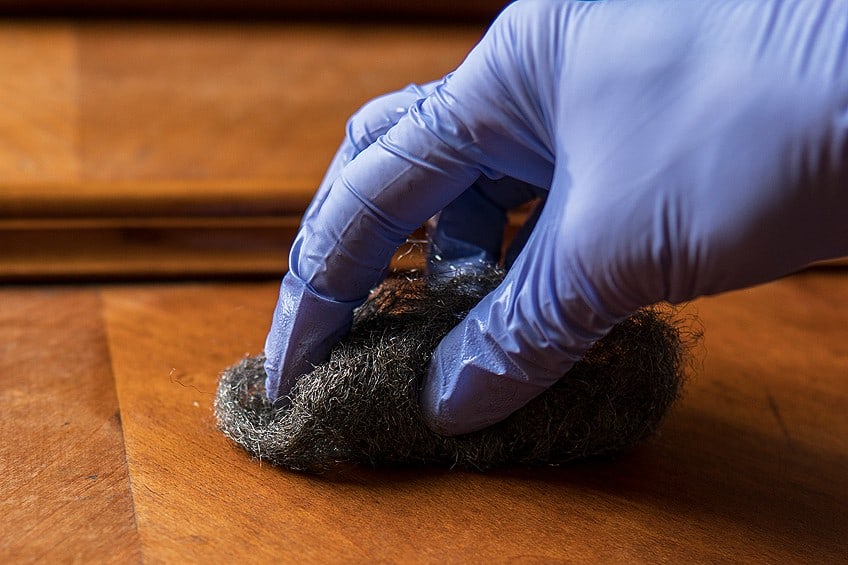
Cleansing Pads
You can find alcohol-based cleansing pads that have acids in them which can help to break down the paint stain. Apply pressure and rub hard onto the paint stain, being careful to keep disposing of and using new cleansing pads once they feel dried out.
Paint Thinner
This can be used when all other attempts have failed. Use paint thinner with caution, as this may damage the hardwood floors. When using thinners, open windows or put fans on so as to avoid the strong smell. Household items that come in handy are toothpicks and tweezers, which can be used to lift the paint in corners.
Prevention is always better, however. We suggest keeping a bucket of soapy water on hand when applying a stain so that you can wipe away any spilled wet paint immediately before it can dry. Always use gloves to protect your hands.
Eco-Friendly Ways to Remove Wood Paint Stains
Everyone is going green these days, so why not try an eco-friendly way to remove wood paint stains? These products are non-toxic and biodegradable, making them better for both you and the earth.
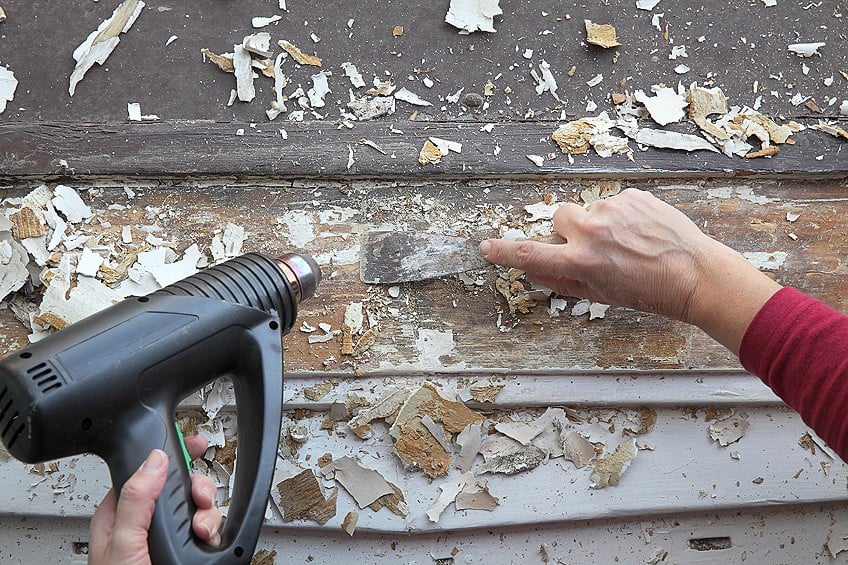
Environmental Solvent Paint Stain Removers
A green paint remover is one that uses limited natural resources, has no toxic emissions, uses less energy, and is good for the environment.
The cost savings associated with green paint removal solvents are high due to the fact that these solvents last up to 10 times longer due to their slow evaporation and re-usability. Acetone products have slower evaporation rates, allowing for a longer shelf life.
When sanding wood paint stains, use a 60-grit piece of sandpaper to begin with and then an 80-grit, followed by a 120-grit to remove any sanding marks. Boiled linseed is another natural way to eradicate paint stains. Apply a little linseed oil onto a cloth and wipe away at the surface. Use a plastic putty knife for stubborn paint stains.
It is very important to use a paint stain remover that does not contain methylene chloride, as these paint stain removers can cause you to become lightheaded, create hand and eye fatigue, and leave you with chemical burns.
Soy Gel Paint Removers
Soy gel paint removers arere a gel-like paint that can be applied to the surface with a paintbrush. These are non-toxic, biodegradable, and produce lower levels of fume emissions. These strippers last much longer before they begin to life, which means that they can be left to coat the surface for several hours without evaporating.
Citrus-Based Paint Removers
You can use citrus-based products to remove old paint from wooden surfaces. These removers are powerful and effective, and will allow you to strip many layers within a single step. These products contain no methylene chloride and are non-caustic. This is the perfect stripper for indoor use and offers a pleasant smell in comparison to most chemical paint strippers.
Boiling Water and baking Soda
This technique is limited to metal hardware, but it is one of the easiest paint removal methods. You should place your hardware into a pot of boiling water with baking soda and boil it for 20 minutes. You can finish scrubbing it with a toothbrush.
Tip: Do not use a pot that you would normally cook with.
This use of boiling water is an old trick. This method works because of the difference in expansion rates between metal and paint which, when heated, can cause the bond between the two metals to break.
Sandblasting
Sandblasting is considered to be eco-friendly, although it is not easy. You can also rent a sandblaster to do the job, being mindful of how you will dispose of the waste when done. For complicated sandblasting projects, enlist a professional who has been trained to work with wood grain. They will in turn take the necessary precautions to dispose of all the materials properly when they are done.
This method can remove years of unsightly wear and tear off of the wood. A good-quality sanding can strip the floor down to its original form. Sandblasting can also be used for spot repairs on original flooring planks.
Tips and Tricks for Removing Paint From Wooden Floors
We have collected some of the best tips and tricks to help you with removing the old paint from your wooden floors.
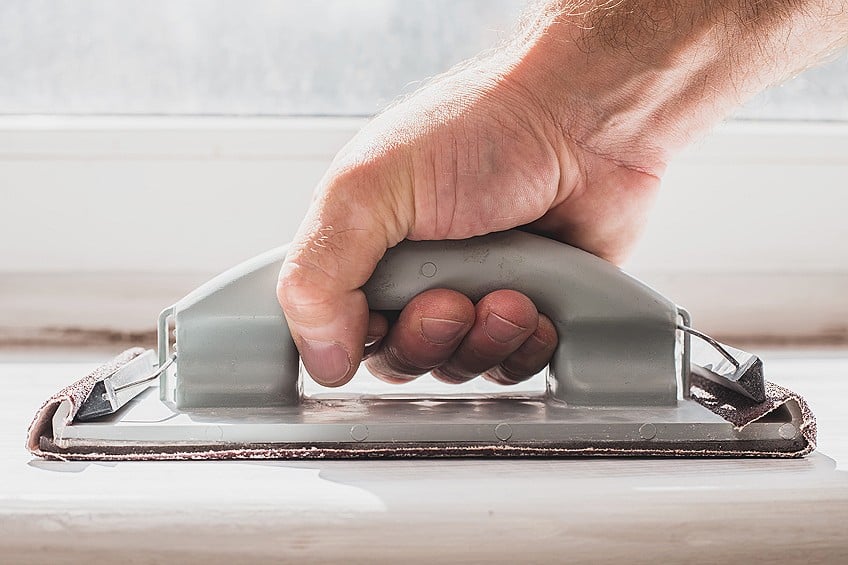
How to Remove Old Paint from Hardwood Floors
To remove an old paint stain from hardwood, you should begin by carefully scraping off as much paint as you can. Mix alcohol and lemon juice in a 3:1 ratio and apply it to the old paint stain, allowing it to rest for five minutes. You can then scrub off the stain with a clean rag.
To remove the paint even faster, you can sand the surface. Begin with an 80-grit piece of sandpaper, ensuring that you use just the right amount of pressure – you want to remove the paint without damaging the wood. You can then move up to a 150-grit abrasive, followed by a final 220-grit piece. Make sure that you brush away the dust from the surface every time you change grits.
How to Clean the Gaps in Hardwood Flooring
When you sweep, dust and dirt can become lodged into the gaps in the flooring. You can use a vacuum to suck all the dust out of these cracks and joints, although it is also handy to put a towel underneath the vacuum so as to prevent it from scratching the wood.
If the dirt has become compact and hardened in the cracks and joints, you will then need to loosen the dirt with a plastic putty knife before vacuuming. You should not use a steam vacuum, as this could damage the wood.
How to Test the Paint Stain for Lead
Many areas that were painted before the 1970s tend to contain lead in their painted surface, which will affect the type of stain remover you choose to use. You can use a chemical testing kit to check if there is lead in the old paint stain.
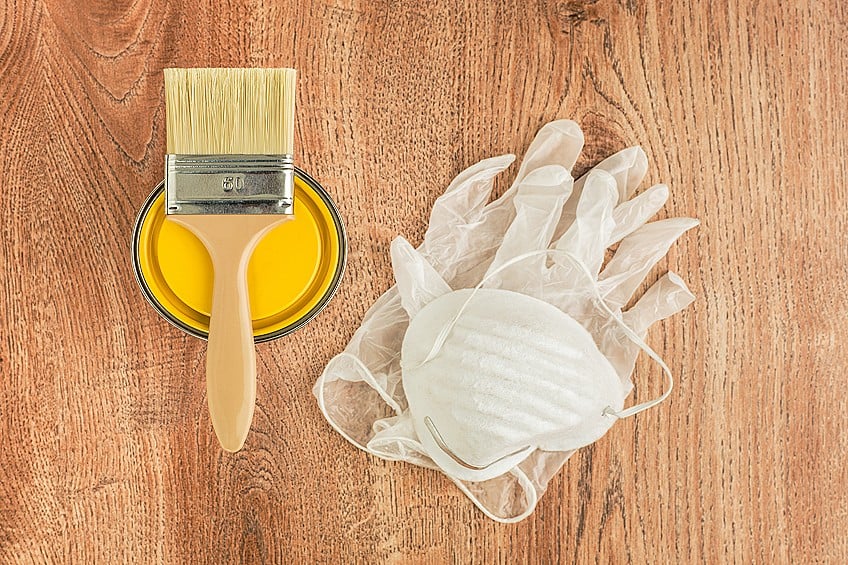
Frequently Asked Questions
Can I Remove Paint from Hardwood Floors without Sanding?
You will not need to sand the wooden surface if you use denatured alcohol, a clean rag, and lots of patience. Oil-base stains will need mineral spirits to be removed, but take note not to soak the wood as this can cause damage. Once the paint has been removed, wipe the surface with clean water and dry it properly.
We suggest using a solution of rubbing alcohol and lemon juice in a 3:1 mixing ratio, allowing the solution to sit on the stain for a few minutes before scrubbing it with a clean rag.
What Household Items Can Remove Paint from Wood?
You can remove paint stains by applying certain household products, allowing them to soak for a short while and then rubbing them off with a clean, dry cloth. Common household products that can be used to remove the wood stain include nail polish remover, baking soda and boiling water, vinegar, soda and flour, borax ammonia and soda, and hydrogen peroxide.
What are the Best Sanding Tools for Removing Paint?
You should begin with a coarser piece of sandpaper and increase the grit gradually. Start with an 80-grit piece of sandpaper, which can be applied manually by hand or with a power sander. Press down hard enough that the paint is removed without scratching the surface of the wood. Move up to a medium grit of 150, followed by a fine 220-grit to get rid of any remaining scratches, marks, and stains.
What Can be Used as a Natural Paint Remover?
You can combine two cups of luke-warm water, one cup of borax, one cup of ammonia, and one cup of regular washing soda, which can be found at any supermarket. You then mix these thoroughly together to form a creamy paste, and then brush the mixture over the paint stain.
How Can I Remove Paint Splatters From Wood?
You can use a plastic-edged putty knife or the edge of an old credit card to scrape the paint stains off. If this does not work, try rubbing a damp rag over the paint stain.
Does Vinegar Remove Paint from Wood?
You can use vinegar to remove paint stains from wood. Vinegar is not expensive and it is highly effective in removing stubborn stains.

I have been into woodworking since 2005 and woodturning since 2011. Because of my love for wood and woodworking, I started woodhappen.com to teach other enthusiasts about how to finish and seal wood, the best woodworking tools, the different types of wood, and everything else related to woodworking! Read more about me here.

